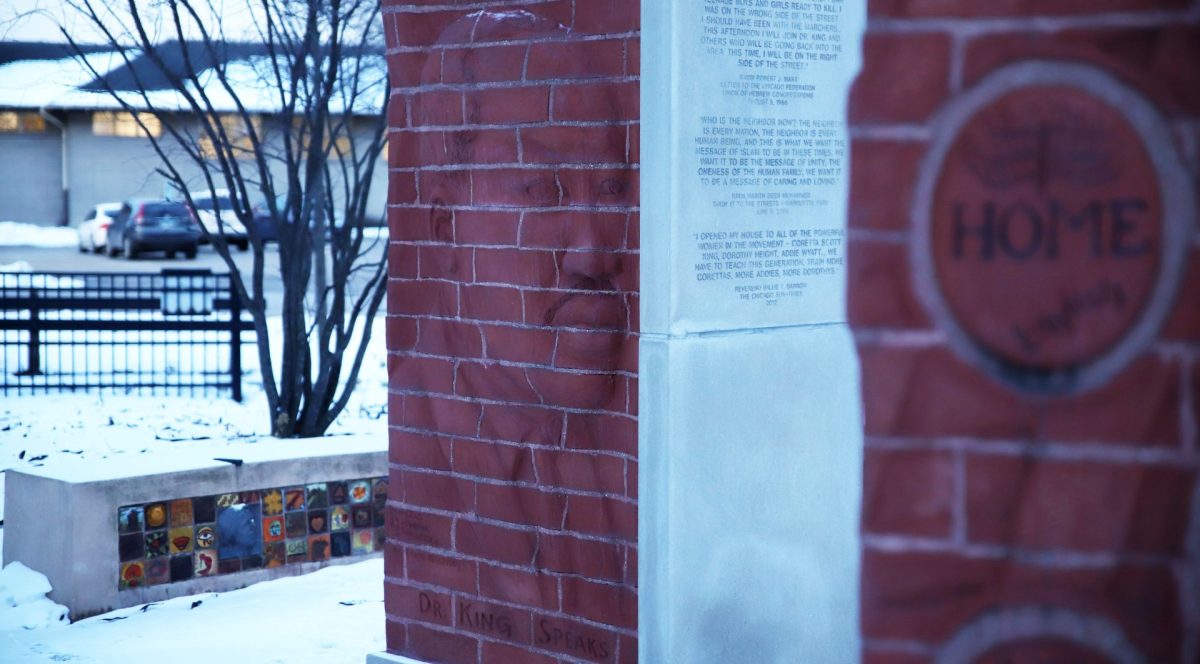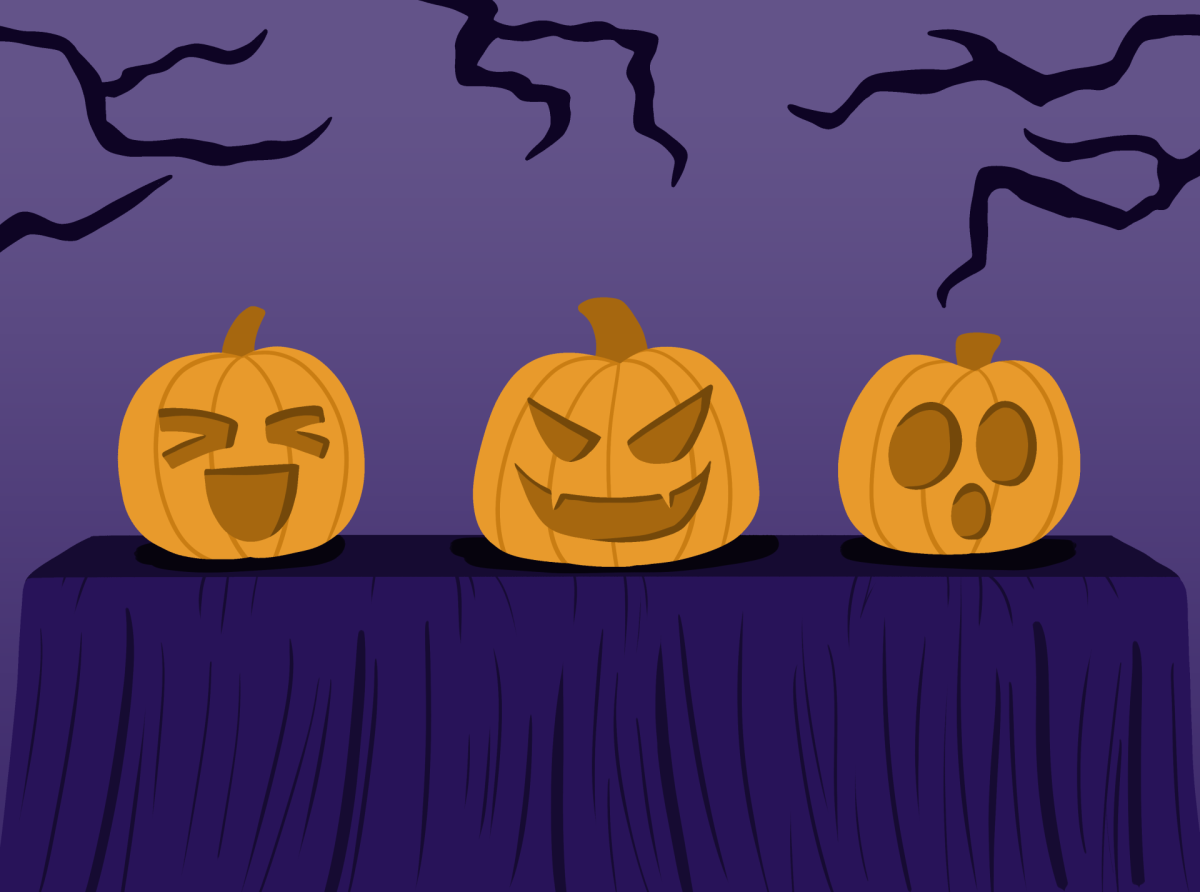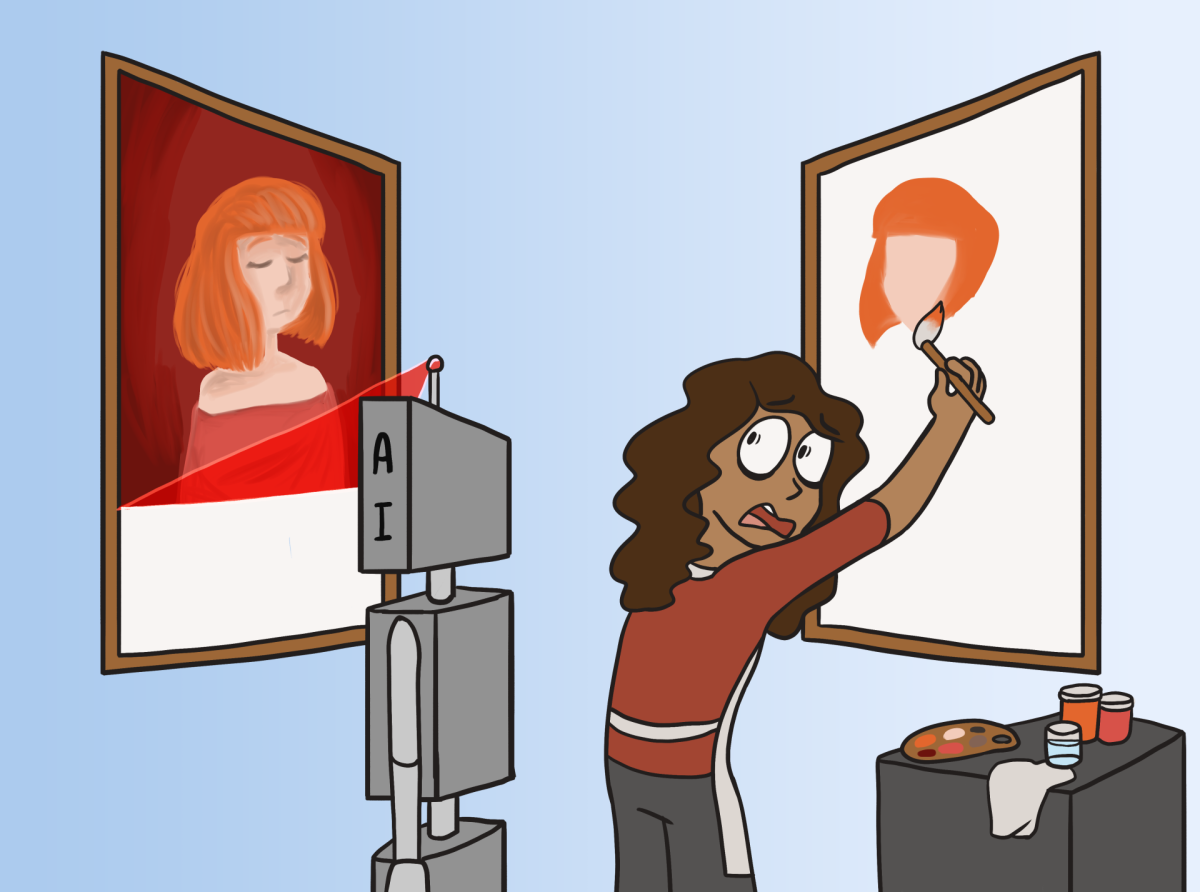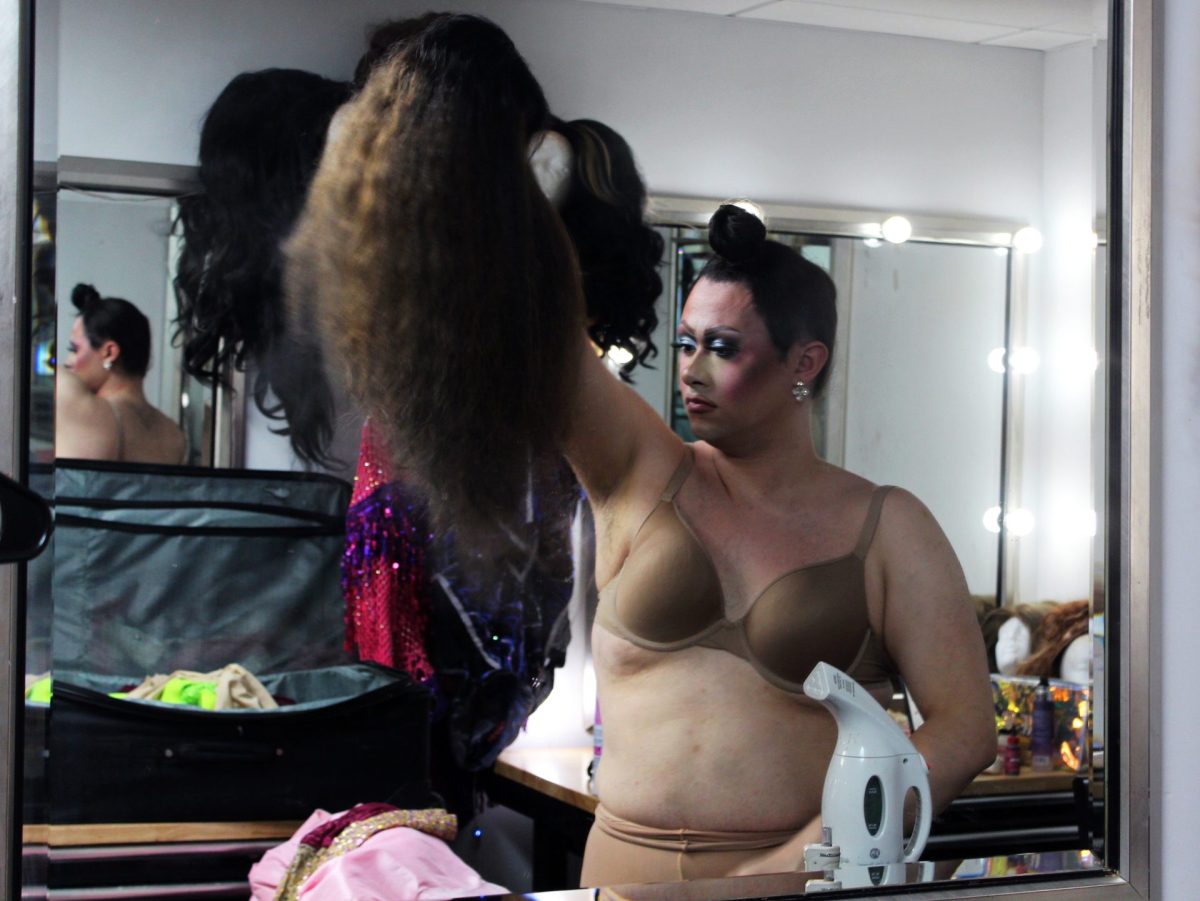
Size does matter, according to the recent exhibition, “S, M, L, XL,” at The Museum of Contemporary Art (MCA). The exhibit held four works in varying sizes, spanning five decades with Robert Morris’ two works from the early 1960s. Constructed to be interactive, the sculptures achieved what each artist had sought to accomplish: a heightened experience through physical presence.
“Blue” by Franz West consisted of a swirled walkway with a small, isolated room. Made of paper mâché, the work invited the viewer to walk along its faint blue interior ultimately leading to a blue stump seat. Once seated, the viewer is directly underneath a hanging series of blue light bulbs tied together. Despite its paper mâché production, the entirety of the sculpture replicated the plaster walls in old-school buildings. The piece was designed to be observed as if it were a room in itself; it demonstrates art as life and encourages the viewer to engage with the work.
Expanding from the size of “Blue,” “Passageway” by Robert Morris welcomed the viewer to explore another walkway, or as the title proclaims, a passageway. Viewers are warned before entering the obscure hall of its potential to produce claustrophobia. Even looking into the entrance of the passageway generates feelings of uncertainty in the viewer. After entering the work, the walls begin to close in on the viewer until there is little to no room to continue. As the hall becomes narrower, the viewer’s physical presence intertwines with inward thought. Morris intended for some viewers to experience aggression upon entering the tunnel-like structure, which supports his desire to engage the audience through interaction with his art.
“Portal” was another narrow work by Robert Morris, but instead of another walkway, it was a simple post-and-lintel structure acting as an entrance to nothing. Viewers were given the option of walking through the work, which caused most to pause midway through and observe the sculpture. The sculpture stood almost intimidatingly at viewers who barely reached half of its measure. Its structure created a dynamic experience for anyone who walked through depending on the size of the individual.
“T.Y.F.F.S.H.” by Kris Martin acted as another entrance, stretching massively with its own unseen room. The work was a hot air balloon being consistently blown up to create an interior room of the balloon for the viewers to walk around. The vast space allowed for multiple viewers to interact with the work at once. While inside the interior room, the viewers appeared to be comfortable. Whether it was intimate conversations or leaving a camera on the floor to engage with children, upon entering the balloon viewers shifted into a surreal atmosphere. Martin desired to convey a stranded or crashed hot air balloon landing into the museum, yet the work was able to produce feelings of security in most viewers, rather than isolation or fear.
Each work was able to take the viewer outside of any physical surroundings and reflect introspectively, which accomplished its purpose of engaging the viewer. Interaction with art, specifically minimalist sculptures, was a necessary choice for the artists in this exhibit to produce an enhanced experience with the art.













